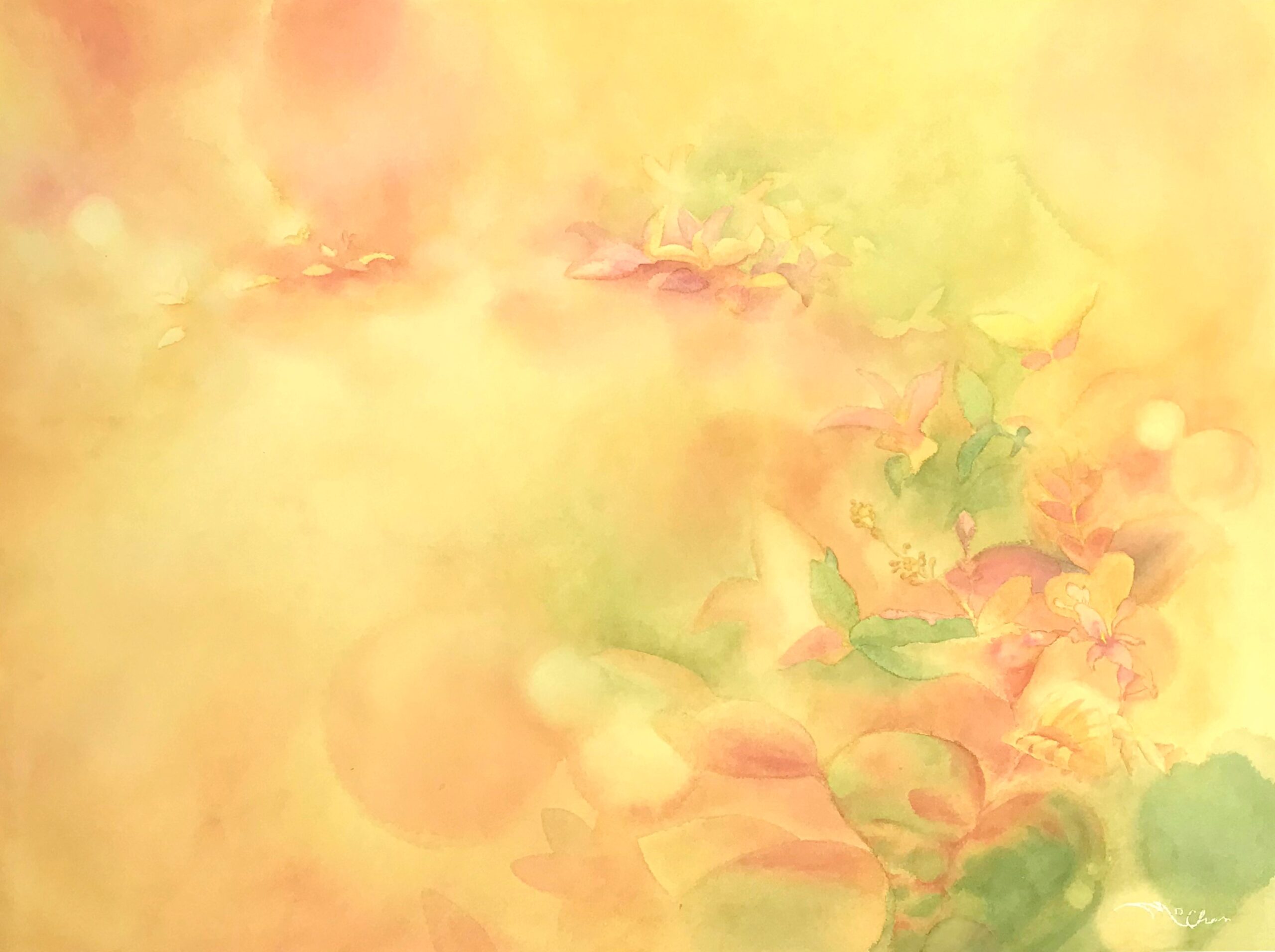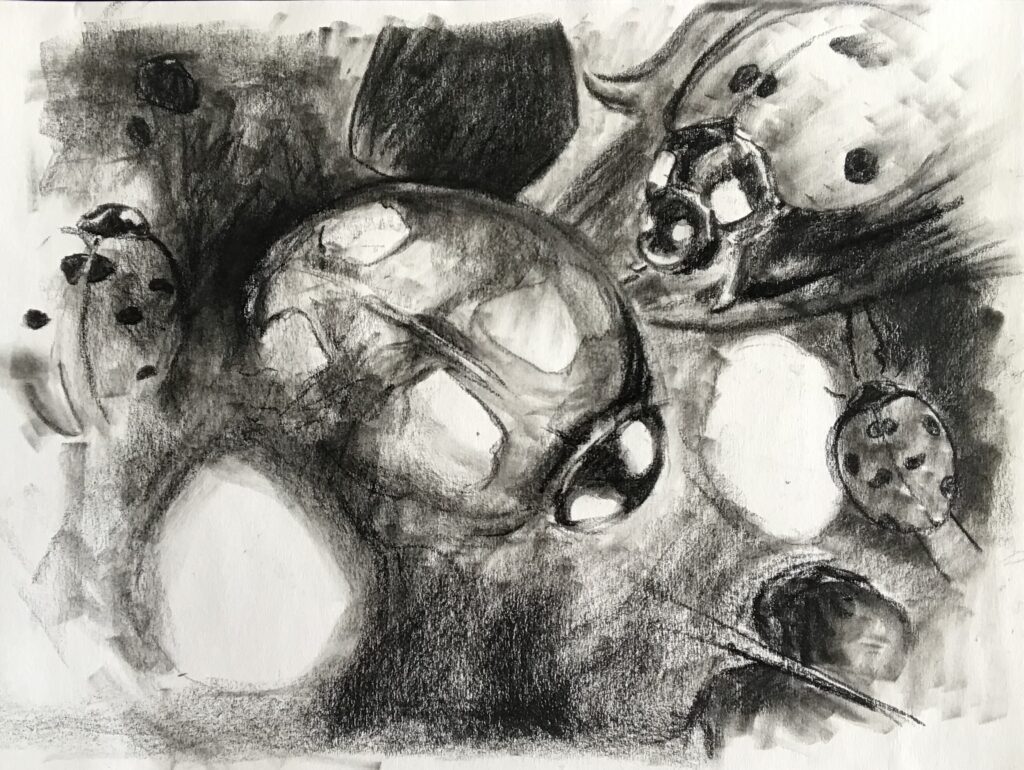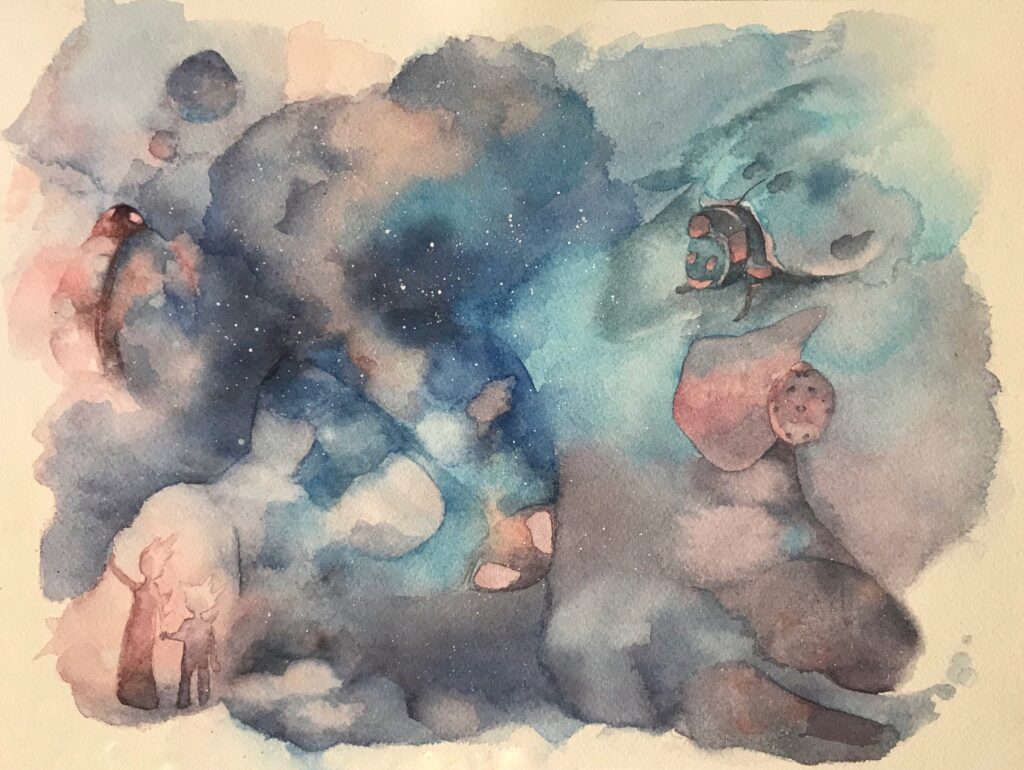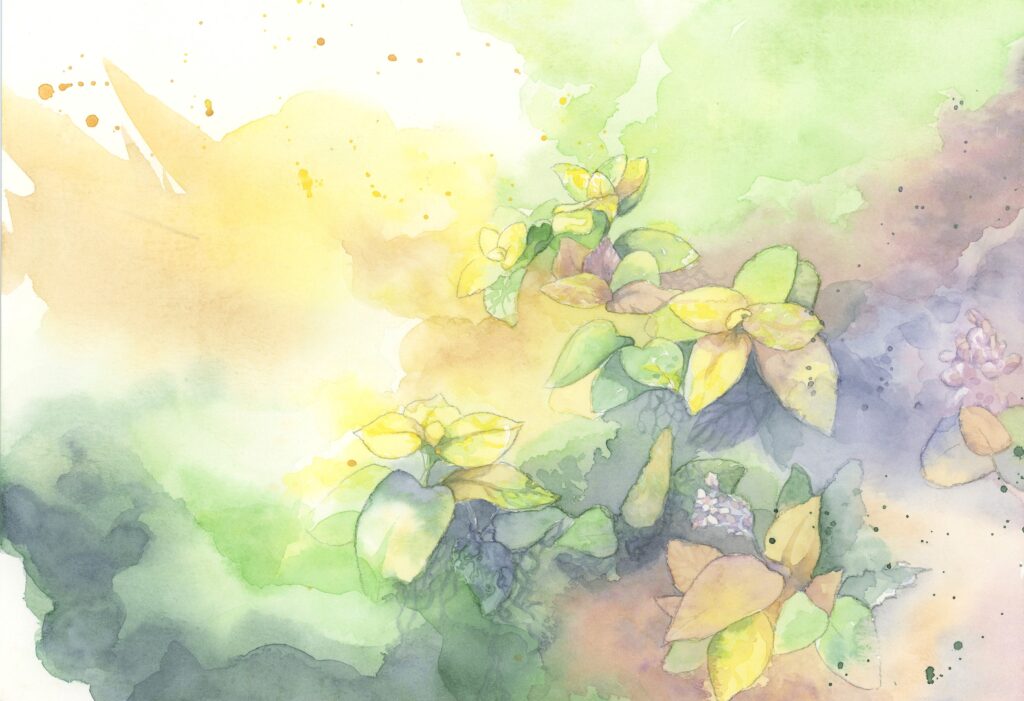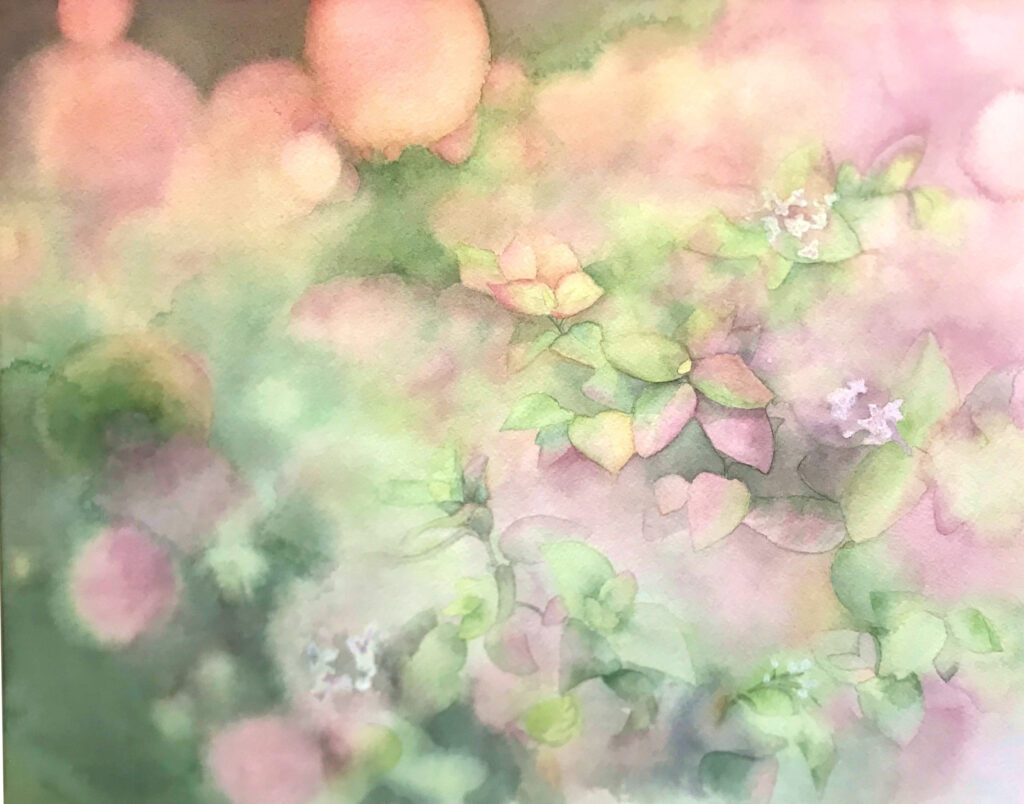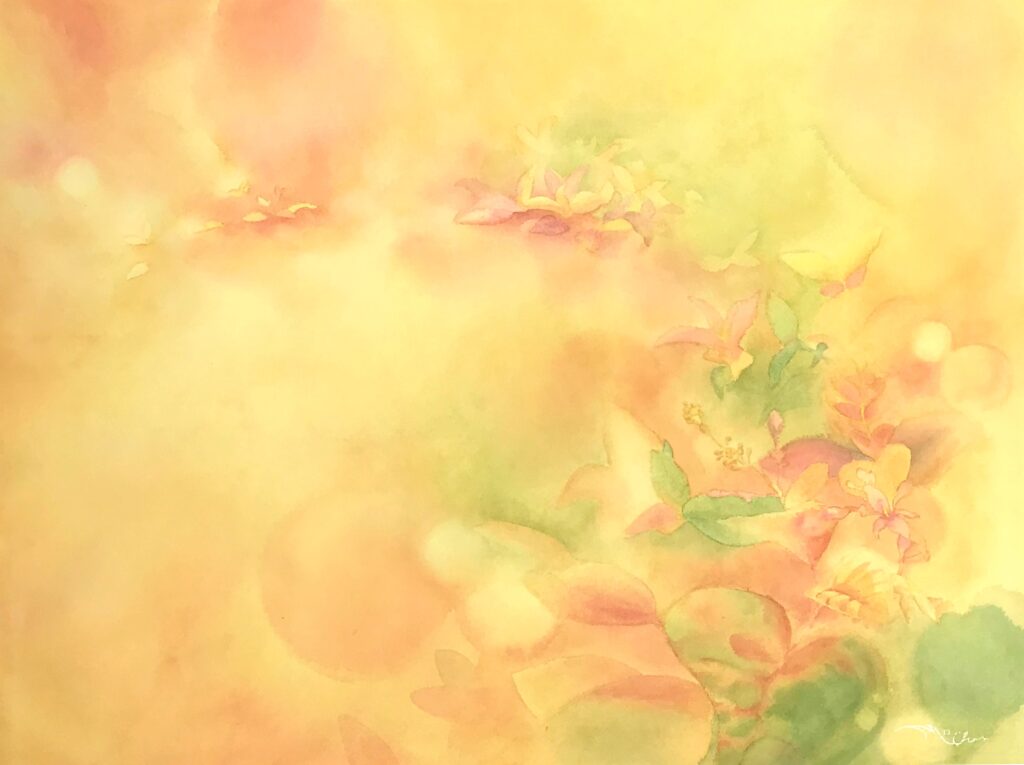Thinking and Being
Being
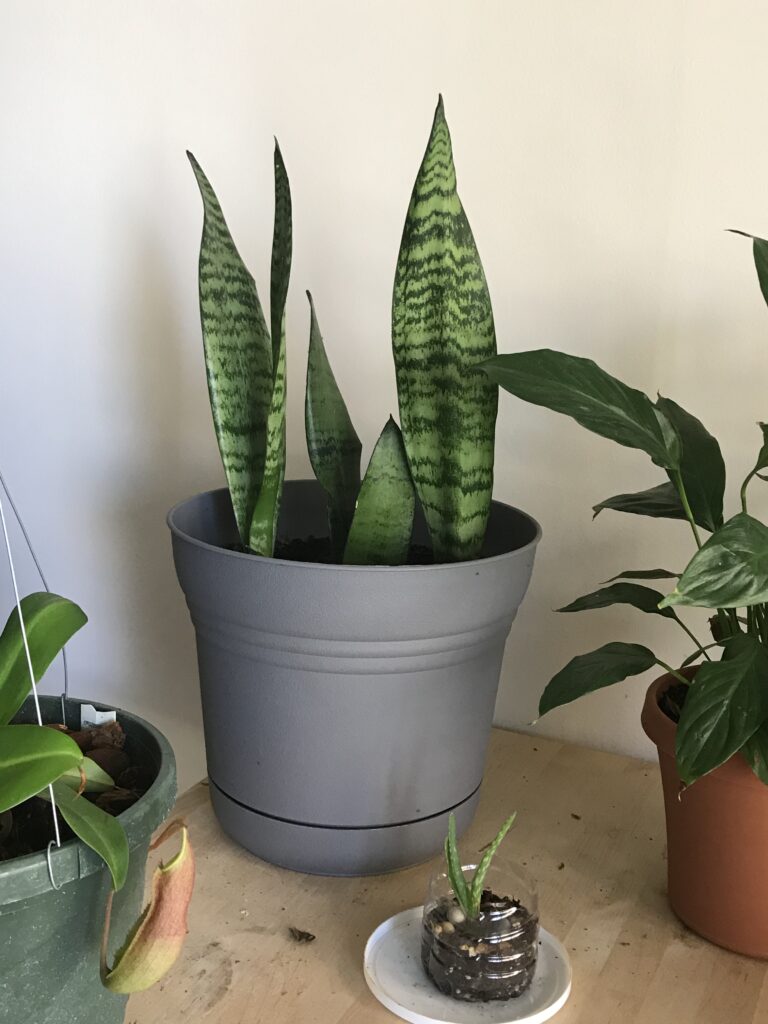
I sat across from a particular houseplant recalling that it has two common names: Snake Plant, and Mother In-Law’s Tongue. I don’t think either name fits it, so I sat there just letting it be itself without attaching a name to it. Although I find it’s easier to practice doing something like this with things that we are not as familiar with, it is possible to do so with the familiar as well. I remember I used to practice doing this as a young adult when I was more actively learning my second language: Japanese. A part of me somehow felt it was important to be able to see a thing as having another name and for it to feel real enough that I could associate the quality of the sound of that name and any other nuances with the thing.
After a while of doing this, I began to be able not only to see a thing as having two names in two different languages, but I found a space that existed between the things and whatever names were given to them.
I believe that space is the space of being.

It’s a quiet, still space that lets a thing just be. After years of grappling with the headaches of trying to be a balanced hapa (I’m half Japanese and half white), I began to let myself exist in that space, too. Then, I began to see that people around me could exist in that space. You may speak a certain language(s), be from a certain country, call yourself specific titles and names, and have worked hard to create a certain reputation for yourself, but in that space, we lose all the labels and associations. All of the conceptual, mental weight can be released and you can just be.
Thinking vs Being
Everyone has a unique essence and embodies a great aliveness. The more we practice experiencing our world from this light, still space, the more it becomes obvious that everyone matters. Not that conceptually we all matter (because that is what is collectively deemed fair and just), but a feeling inside us that grows to just embody this wisdom without needing to put words to it. Our actions become an effortless extension of this wisdom, and we are more able to be honest with ourselves and our current level of maturation as a human being–not measured in years lived, but in this sort of cultivated and ripening inner wisdom. I like to think even if I met an alien from another planet one day, that I am well prepared to see them and treat them as existing in this space of being as well.
What’s been confusing in my own journey of accessing the present moment through being, is understanding that we cannot think our way into being. The thinking mind is something we can detach our awareness from and we can little by little sink into stillness and taste what “being” feels like.

I had tried the gratitude practice of writing things down that I am grateful for, however, I personally found myself not actually glowing in the feeling of gratitude. I was THINKING my way to the feeling, but the feeling never came. Using the thinking mind to try to get to a feeling can backfire if you are like me and mentally bully yourself sometimes >< We might compare our situation to others, or tell ourselves we shouldn’t feel the way we do, instead we should feel THIS way. The next thing you know you are split in two: the part of yourself that simply feels as it feels, and the other part of yourself that is condemning that part of yourself.
Greater awareness came when I would immerse myself in creative activities. I realized that I would more easily disengage with my thoughts and all my energy became more fluid and cooperative in whatever it was I was doing. Even though I was still doing something, I was thinking less and was flowing more..coming closer to being.

Unnamed Being
As most of us rely on spoken language as a means to think, then our awareness may become limited to those things which are already established in the language we speak. However, there are no words for many things. That doesn’t mean the thing does not exist, maybe it is just harder to perceive because there is no paved context. Until our awareness is brought to this unnamed thing, we may go a lifetime being blind to its existence. Examples of becoming aware of these blind spots are abundant also when learning another language later in life as I did.
I remember the day my cousin taught me the meaning of “otsukaresama” in Japanese. We had just spent the whole afternoon shopping for odds and ends that I would need for my new life in Tokyo. “Is it like ‘good job’?” I remember asking. She said it was a feeling that both people involved felt. We both exerted effort in a kind of togetherness while tackling a task. By saying “otsukaresama” we were acknowledging this feeling. These were my first insights into a phrase that I would continue to hear a countless number of times in daily Japanese life. How could a feeling that is so common to an entire country of people, not even exist in my mother tongue? It was only one of MANY examples of words and phrases that acknowledge situations and feelings that were completely new to me.

Of course, you don’t have to learn a second language to have this experience, it is the mindfulness practice behind the experience that enables the shift.
In the “being” state, we may sense many “sights” and occurrences that we don’t have to put into words. We can have other personal “languages” or modes of expression we can funnel the “sights” through. I think music or fine art are examples of such personal languages.
When I was a teenager learning the piano on my own, I remember imagining being blind and wondering how that could heighten a person’s sensitivity to energy. I didn’t call it “energy” back then, but I knew there was subtle information that a blind person was better at receiving and interpreting in the presence of someone or something. I imagined a blind street musician who you could walk up to and after a moment of reading your energy, they would create music as a means of expressing what they interpreted in that energy–their own unique language expressing your unique energy!
When you practice using and developing a personal language, there’s a kind of satisfaction that comes with increased fluency over time. The satisfaction may be silent and personal. No matter how much we want others to feel or taste our satisfaction, it may come in a completely different form for another person. This illustrates the futility in attempting to critique each other’s art forms. With mastery over time–meaning a steadfast dedication to becoming fluent in our own unique language(s)–heads may turn and see that quality of our essence shining through whatever apparent sensory experience we have woven. However, I don’t think it is the product itself that touches another person, but the undeniable essence of one’s heart and soul emanating from their work.
Memory Play
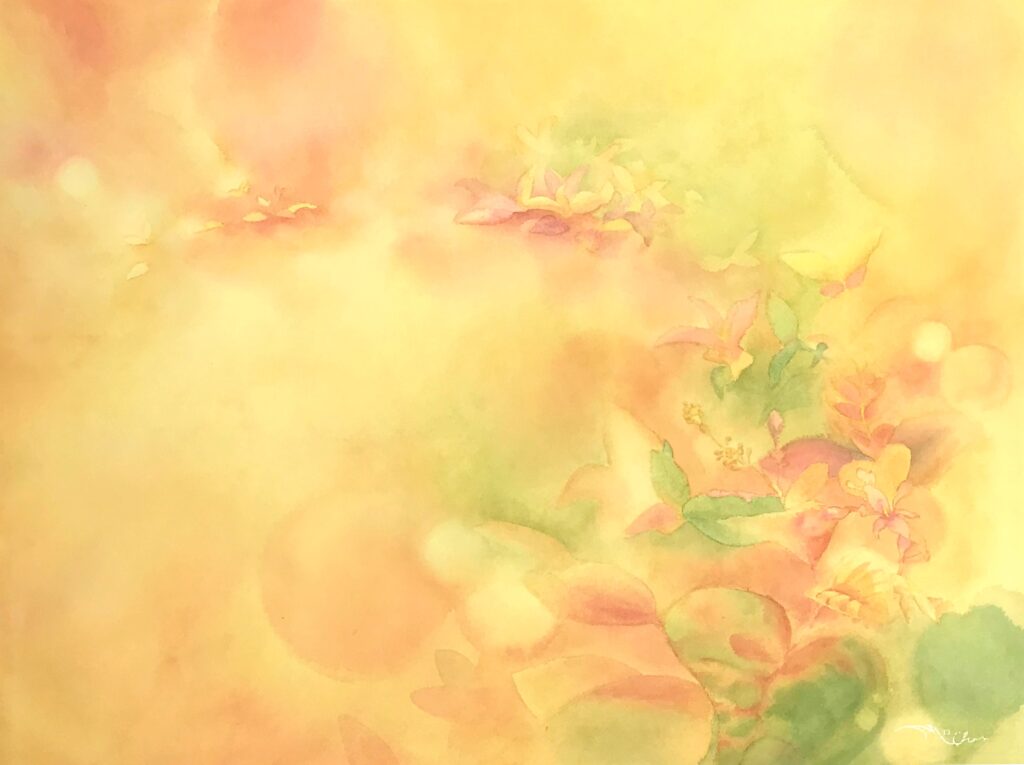
I have painted the same thing three times now. Each time I base it off of one highly charged positive memory from the past. What I’ve discovered is that each version is quite unlike the one before it. How could it be the same positive memory then? Each time I recall the memory and channel it through me into the form of a visual image, it looks completely different.

After examining the nature of memories a little, I am inclined to view them as a sort of working canvas. A memory does not have to be defined or set in stone. The actual experience that the memory represents is a portrayal of the past that we carry with us, but we can learn to build and layer thought and emotion onto it in a way that helps us move forward with more ease. We do not have to feel that our pasts define us.
In other words, we do not have to give our power now to our pasts.
In my case, the memory that I say I recreated for the third time is more of a representation of my current self than my past self. The current self is the one who expressed itself. No one is still the person they were in the past, although some people can get stuck reliving their pasts–good or bad.
The past is like the language of yesterday. There is always a new language we can be receptive to, today.. right now. The intention behind each of these three paintings was always to depict one seemingly frozen experience from the past, except that since I was predominantly painting a re-creation of the feeling of the joy and magic I had felt then (more so than a realistic image of a thing), my current self was only able to access its current experience of joy and magic because that is where those states of being truly exists: in this present moment. The memory itself has become a trigger for experiencing joy, but that joy is the joy of now– it is not the joy I felt then. Both memories and thoughts can trigger emotion in this way.
When our nervous system is out of balance, we may find that memories and thoughts trigger more emotion than actual present moment experiences. For example, we may be looking at a beautiful sunset or night sky, but the colors are not reaching deeply into us, and the noise in our head and disruption in our hearts and gut may feel more real than what is right in front of us.

Physically, I am here, but as my thoughts and emotions are tied up with some ongoing sense of unfinished business that needs to be dealt with conceptually, I am postponing my access to the present moment. I am not fully present. I am THINKING, not BEING. My awareness– my energy– is scattered.
The JOY and BEING connection
What is more important than joy? I’ve written about the inner smile previously and shared my personal experience of a short moment in time when the most overwhelming amount of joy I’ve ever felt in my life thus far, seeped into every available nook and cranny of my being. It was perhaps overwhelming because my energy was not split. No thoughts or emotions trespassed on that moment. I was more fully present than I’d ever been before with all my awareness just drinking in that glorious sense of peace and well-being.
I was taught a lot by that experience. One lesson was that I had access to a kind of calm and inclusive positive pervading energy that could be experienced without the need to prove anything to anyone else, including my own self. I recognized some of my own conditioning: to seek validation and to seek permission from others to feel good. I think I did that (we do that) because we have experienced gaining the understanding and acceptance granted to us by others that feels wonderful. However, to my great surprise, other people do not need to be a variable in our experience of or access to feeling complete. Joy found me that day and there was no reason for it, I did not somehow deserve it extra that day.
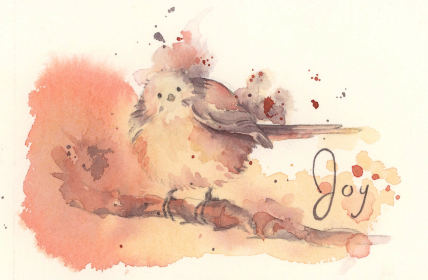
There is nothing to prove to myself or others so that I may deserve to feel good in any moment. My body has a wisdom that my mind lacks. A body-mind able to feel joy and pleasure is the mark of true health and well-being. Life is really over complicated when we give our power away to others, by needing them to validate, understand, or accept us as we are. We even bully ourselves, convincing ourselves that because we see an aspect of our self or lifestyle that could use improvement, that joy comes AFTER we fix it. Thus, fixing or improving something becomes a prerequisite to feeling good.
What is the feeling that safety and support brings? What is the feeling behind getting all our basic needs met? What is the feeling behind the idea of good health? What is the feeling behind having a good reputation, good status, and good merit? Being included? What is the feeling behind being good at something? What is the feeling behind being with a beloved pet? What is the feeling behind freedom and no time constraints?
I think on that particular day, I felt the feeling that all those above questions point to but don’t actually guarantee. To say it simply, we all want to feel inner wellness. However, in creating mental traps that keep us feeding into the idea that we cannot experience certain feelings–be it joy, gratitude, or peace–unless a laundry list of conditions are met, we sabotage our access to the present moment where those authentic real states of being are experienced. We perpetually THINK our way down many rabbit holes believing the answer and the joy is somewhere ahead of us, when really if we learned to stop thinking and just sit in stillness, the peace can find us.

